Demystifying tyre pressure calculators: How to get the right PSI every time
A look at the science behind calculating the optimal tyre pressure for where you ride

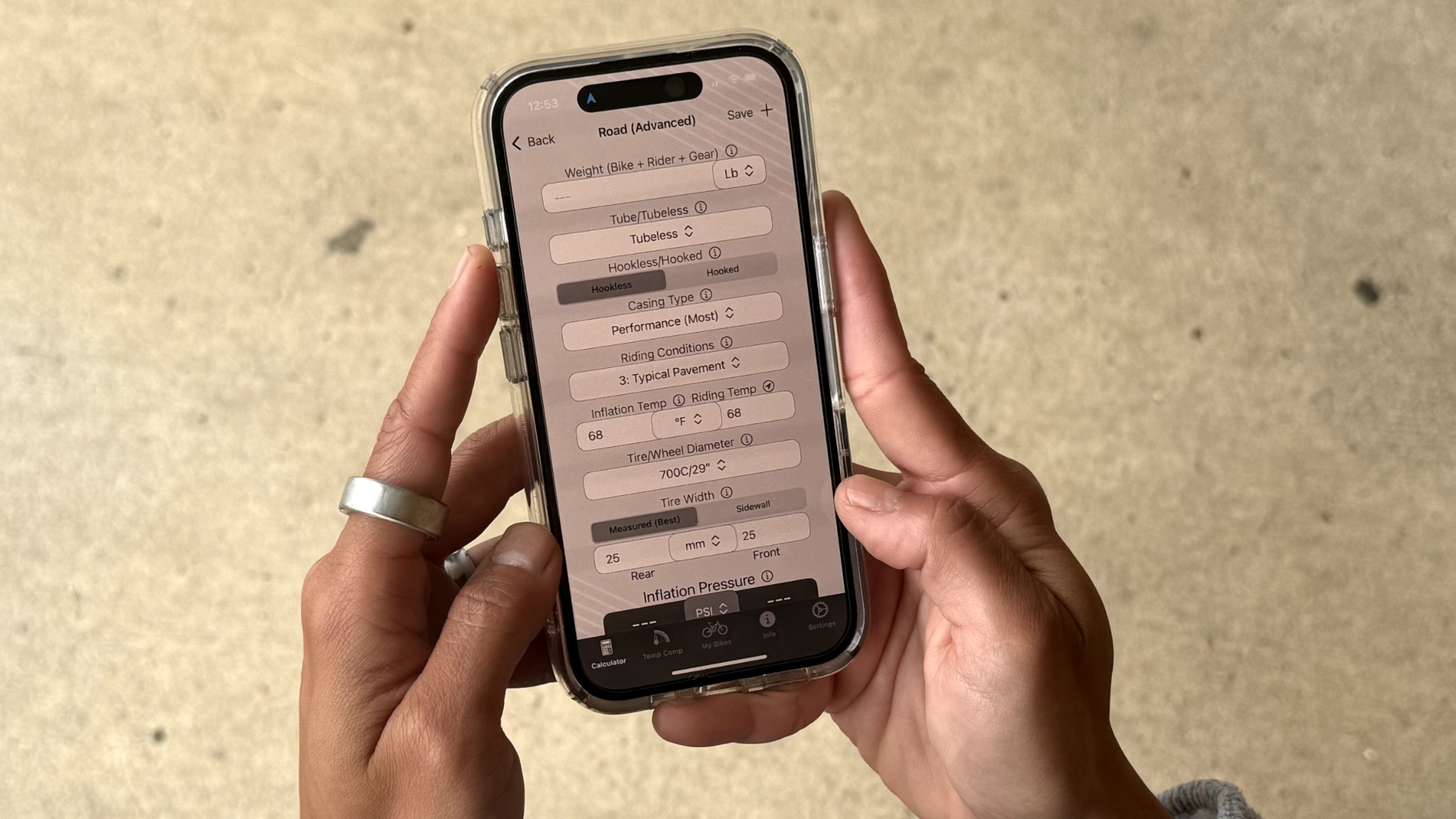
Finding the ideal tyre pressure for where you ride is as much art as science. The perfect pressure, or more realistically, range of pressures, depends on a variety of factors including weather, terrain, tyre makeup, a rider’s skill level and more. Testing pressures through trial and error remains a slow and painstaking process, but it can be the best way to learn what works.
Several different companies have developed useful tools over the last few years to help take some of the guesswork out of this process. Silca, SRAM and Rene Herse make three of the better known pressure calculators, and tool and accessory manufacturer Wolf Tooth Components launched one of its own at the beginning of 2025. I spoke with Wolf Tooth cofounder Mike Pfeiffer about the company’s tyre pressure app to learn more about how these calculators work and how best to use them for my riding.
Wolf Tooth, like Rene Herse and others, advocates for running lower tyre pressures (within reason) and argues that many riders still inflate their tyres too much. Lower pressures can improve traction, enhance comfort, and even reduce rolling resistance — particularly on off-road terrain.
What is a tyre pressure calculator?
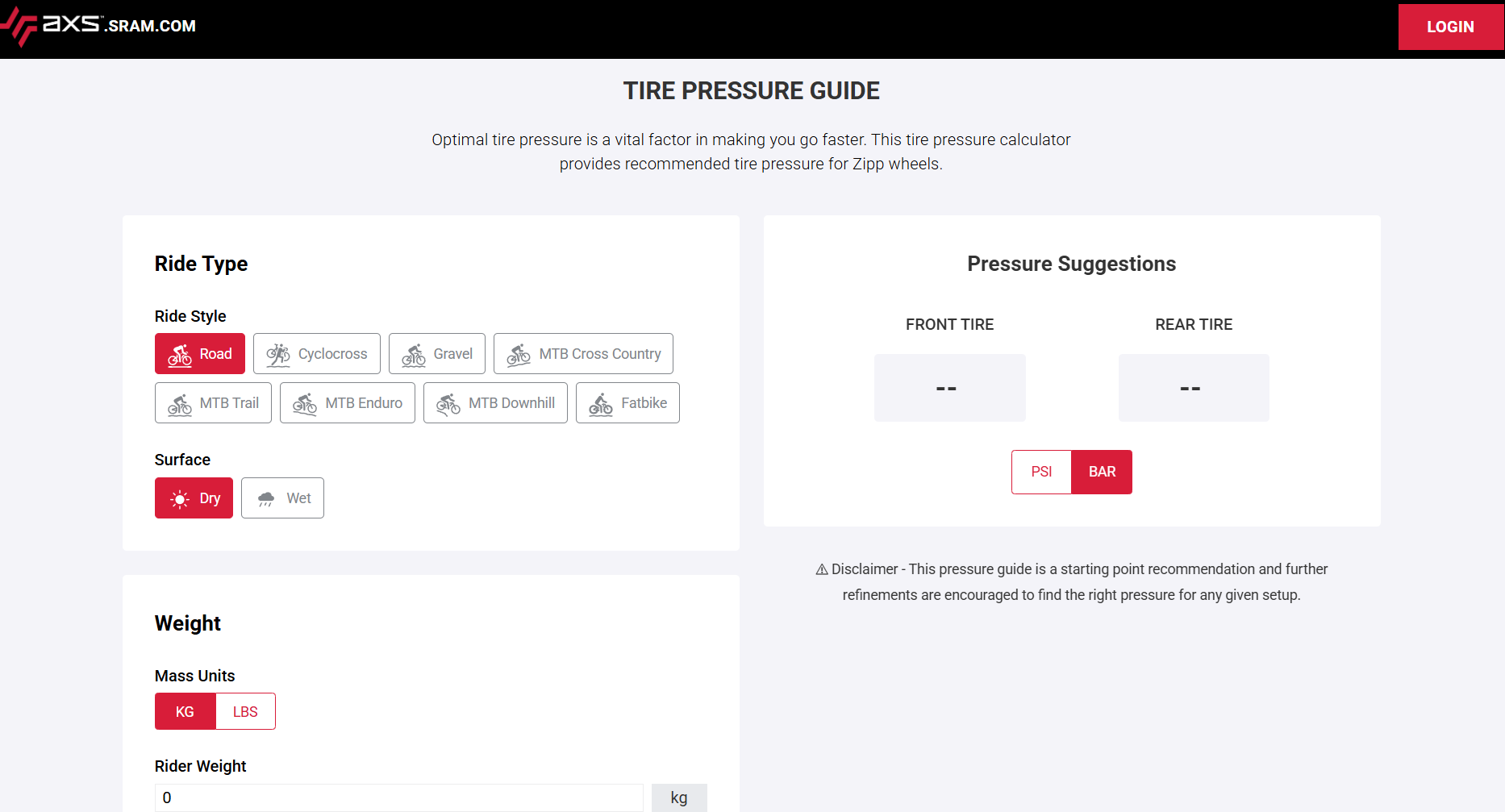
Simply put, a tyre pressure calculator is a tool to help you derive an optimal range of tyre pressures for your bike and riding style. Such calculators can help to parse the vast number of inputs affecting tyre performance. Wolf Tooth’s advanced calculator, for example, considers the following: total system weight, casing type, riding conditions, ambient temperatures, tyre diameter, measured tyre width, inflation pressure and ultimate riding pressure.
If you want to optimise your pressure for a route that is a precise mix of 50/50 road and trail, that’s something a pressure calculator can help with. Or, if you’ve just purchased a new, wider set of tyres, and are wondering how much to drop your pressure, then a calculator can give you an idea just how much pressure to try.
Another scenario in which a pressure calculator might be useful is for a rider whose bike is loaded up with gear for a bikepacking trip, potentially a substantial increase over a normal setup. By weighing the total (including body weight) and inputting this figure, riders can get a sense of how much additional pressure might be needed to compensate for the added mass.
These are just a few examples.
The latest race content, interviews, features, reviews and expert buying guides, direct to your inbox!
How do tyre pressure calculators work?
Wolf Tooth’s calculator uses a slope-intercept linear equation to calculate pressure change vs. weight. According to Pfeiffer, the key is “in choosing the right coefficients for different riding conditions, bike types, etc. Adjustments for things like tire width are also linear. Pressure change with temperature is a little different but also a pretty simple formula.” One benefit of Wolf Tooth’s app is that it allows riders to adjust outputs based on their own preferences, and tweak the results to suit.
I also asked Pfeiffer about the testing behind these equations. He said that their methodology involved “a lot of ride testing [to answer the question:] does the recommended pressure work as the lowest reasonable pressure for a given riding condition? The limiting factor for low pressure is usually impact resistance or tire stability.”
I have previously written about how drum roller testing does not align with real world tire testing, and Pfeiffer echoed similar thoughts. He says drum roller lab testing “suggests that higher pressure results in lower rolling resistance but we know that's not true outside of the lab (or maybe smoothest pavement). Our philosophy is that the lowest pressure compatible with a given riding condition is best (fastest, most fun, whatever).”
How to use a pressure calculator effectively
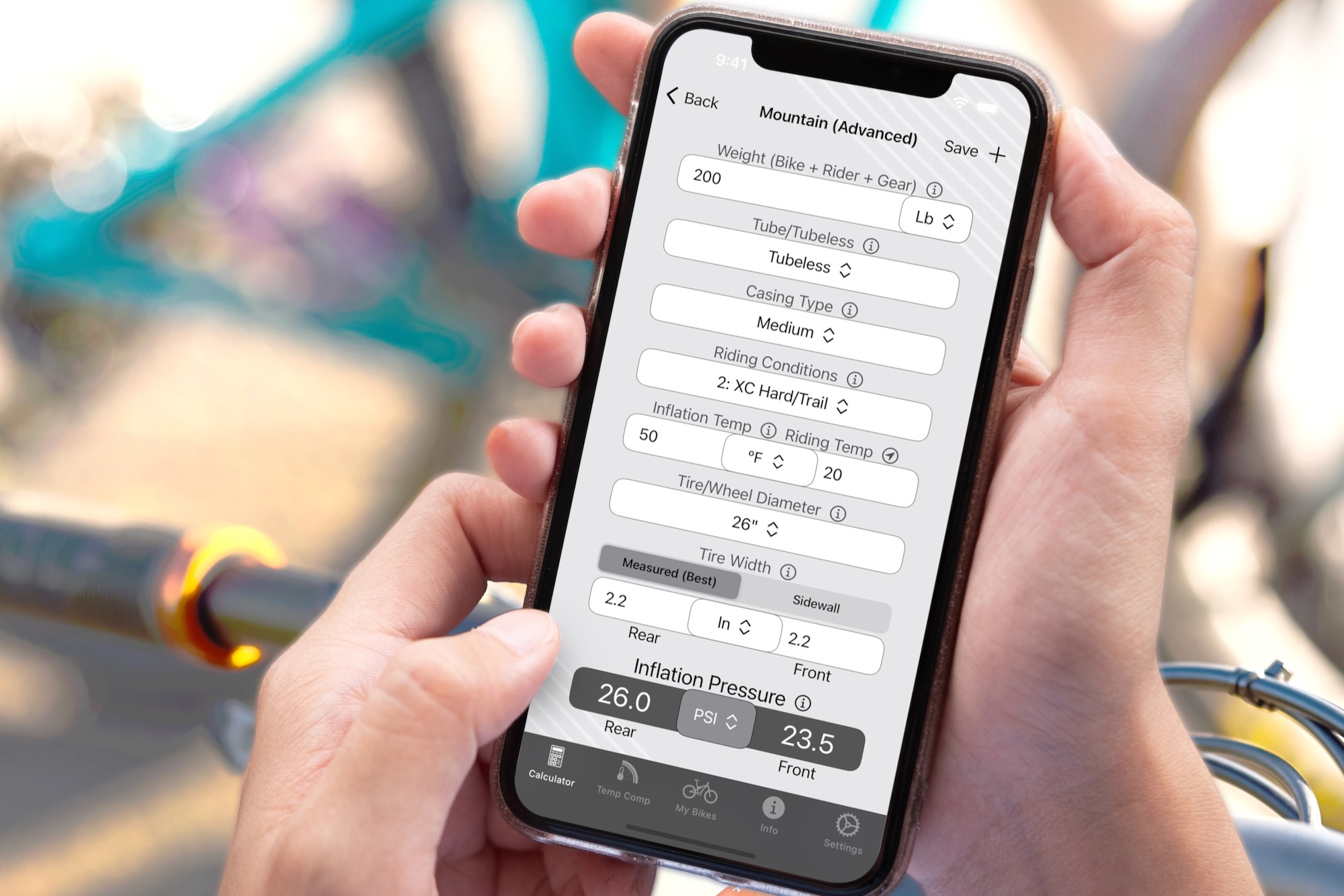
I recommend experimenting with a few different pressure calculators for yourself. You’ll quickly notice that they’re not all the same. Each one values different inputs slightly more or less, and the only way to find what works for you is through testing them out.
I prefer to run my tyre pressure low, and Wolf Tooth’s calculator seems to work well for this. Each rider’s needs will be a little bit different. By adjusting the more subjective inputs, like riding conditions, you can see how the calculator’s recommendations change. This then provides a good jumping off point to do some testing of your own.
Finally, some things to keep in mind
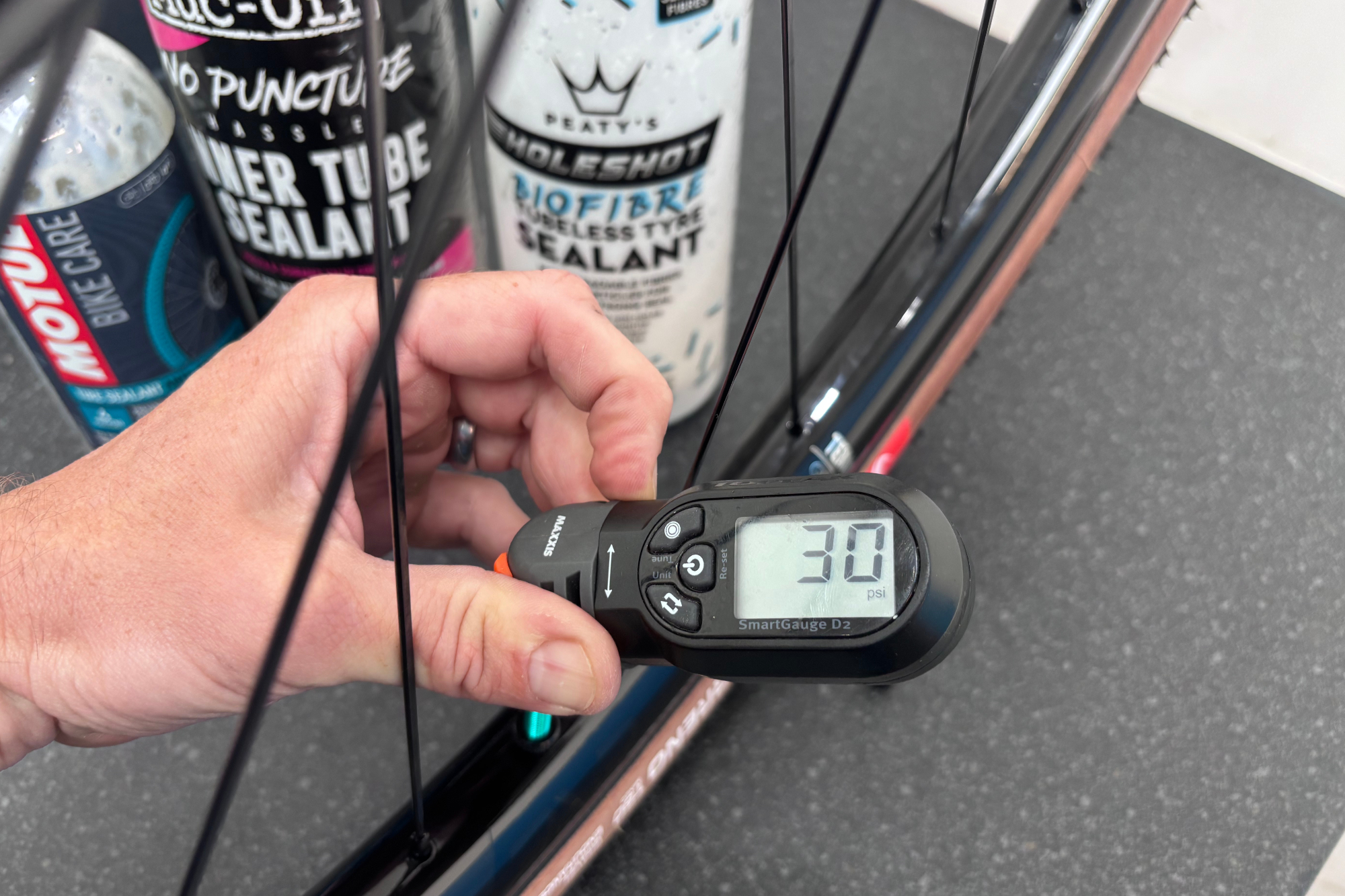
First, any recommended tyre pressures are only as good as your pressure gauge. If your gauge is inaccurate, then it’s going to be hard to have consistent, repeatable results. Another thing to keep in mind, especially for multi-day trips, is how much pressure loss occurs per day. For example, latex tubes can lose significant amounts even over short periods of time. If you’re going bikepacking for a few days, some extra air on the first day might be advisable.
One other tip: pressures that feel comfortable on solo training rides, or course pre-rides often are not sufficient for racing. At race speeds you hit obstacles harder. Further, visibility is often compromised when racing against others, so adding pressure gives you an added buffer against pothole- or root-inflicted pinch flats.
Tyre pressure calculators should be used as a guide, not an absolute—there’s no substitute for experimentation on your own. Some riders might love the magic-carpet smoothness of a 45mm tyre at 25 psi, while others find this sensation more akin to nursing a slow leak. Your preferences matter!
Finally, asking “what pressure are you running?” to nearby riders at the start of a race is always advisable, if only for the chance to feel smug about your perfectly optimised race setup. When asked the question in return, make sure to say you’re at 5 psi less than actuality to sow seeds of doubt amongst your competition.
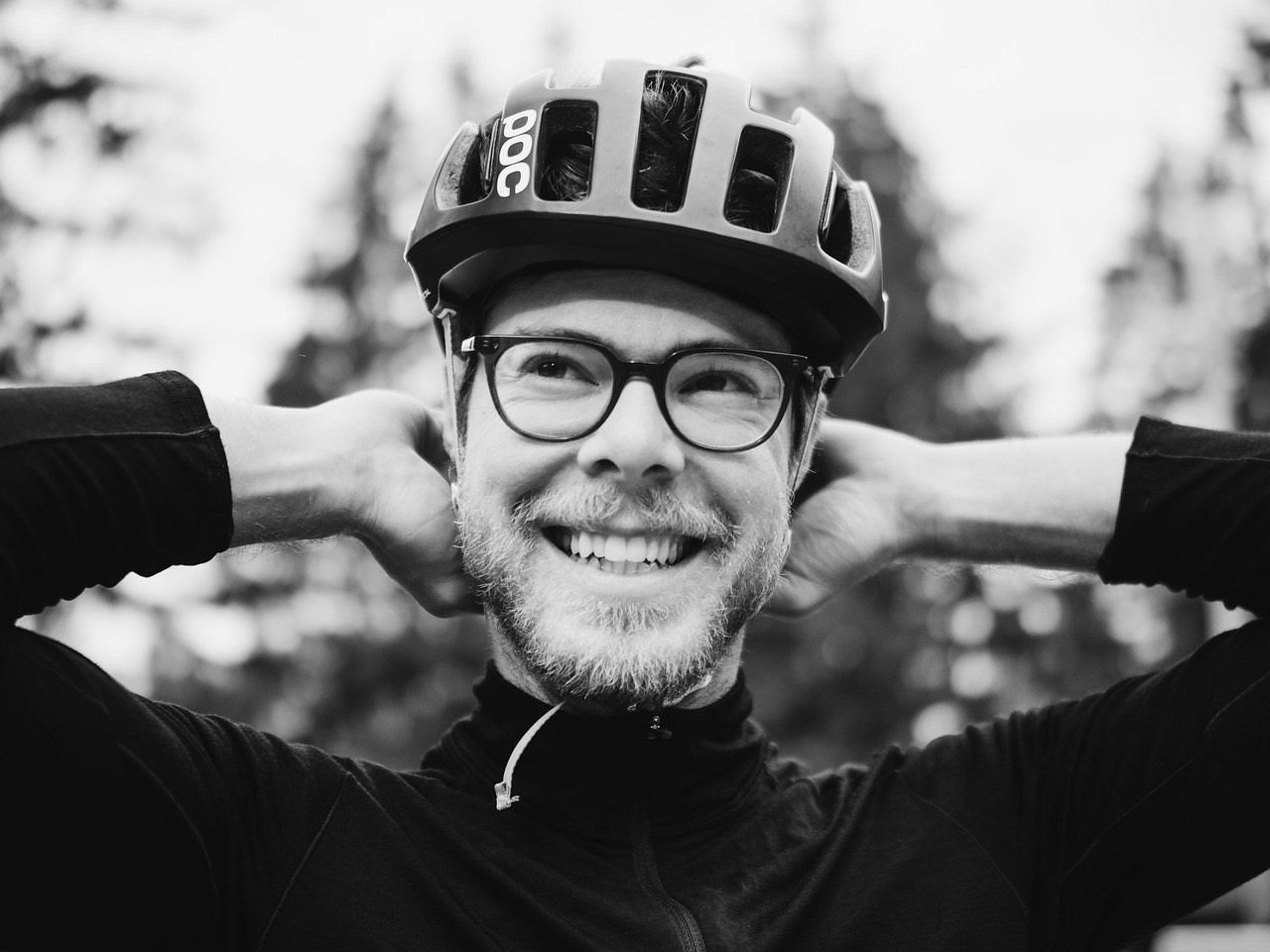
Tyler Boucher is a former (and occasionally still) bike racer across several disciplines. These days, he spends most of his time in the saddle piloting his children around in a cargo bike. His writing has appeared in magazines published in Europe, the UK and North America. He lives in Seattle, Washington.
You must confirm your public display name before commenting
Please logout and then login again, you will then be prompted to enter your display name.